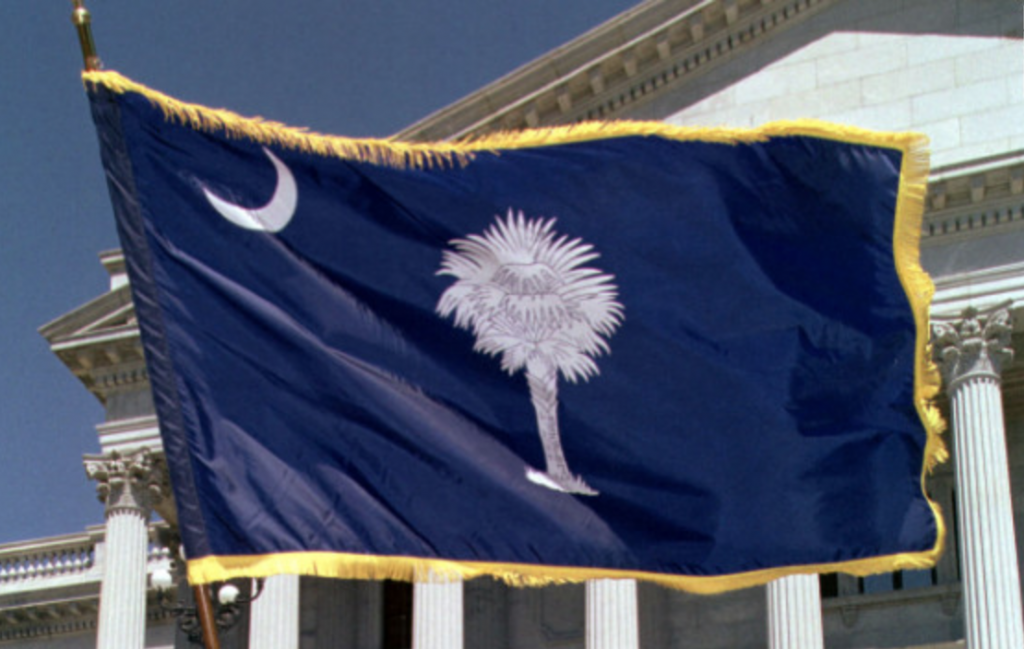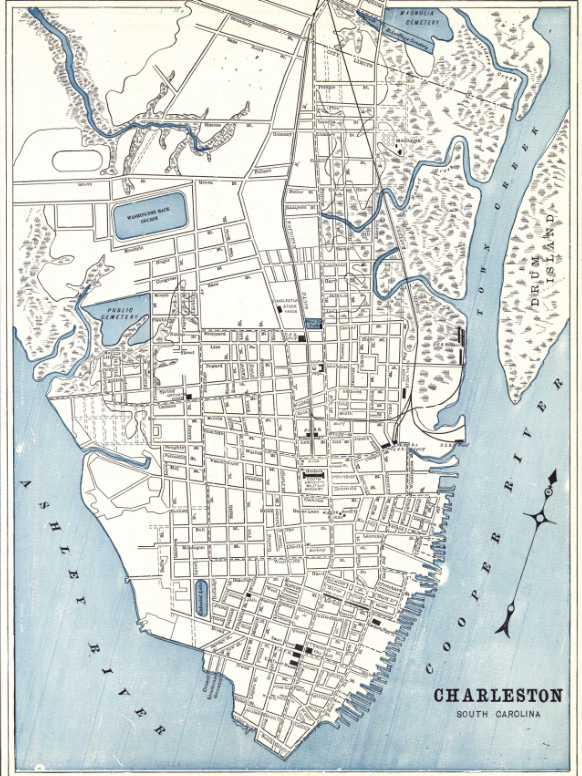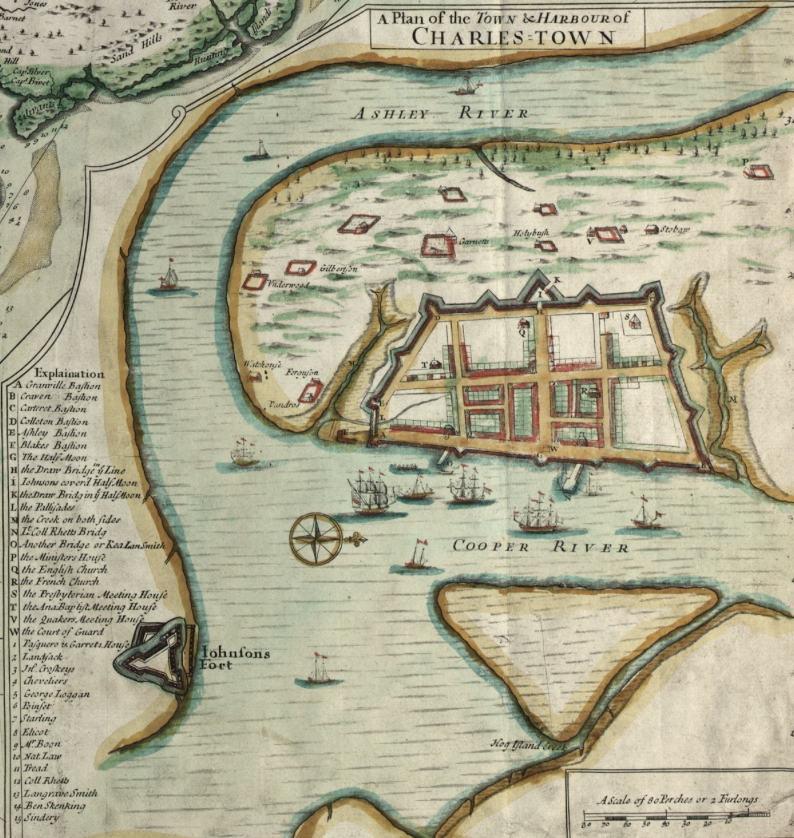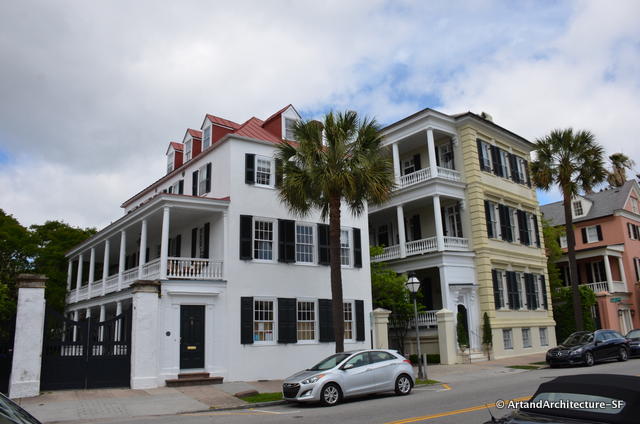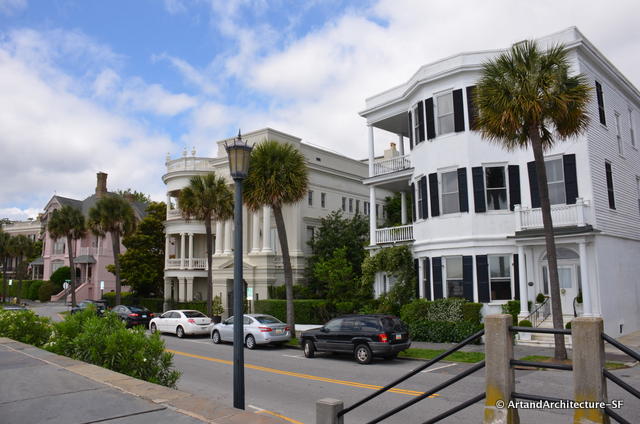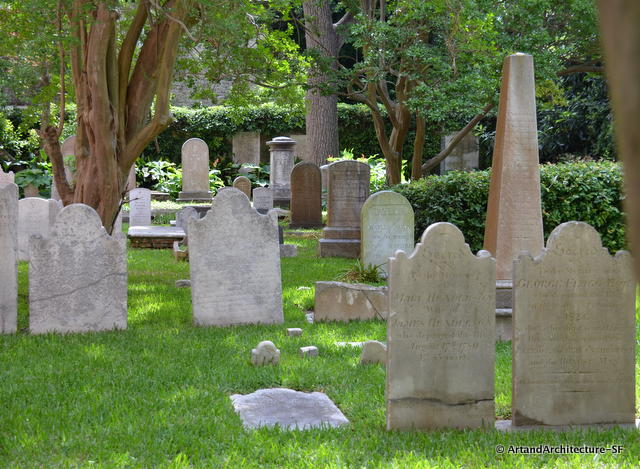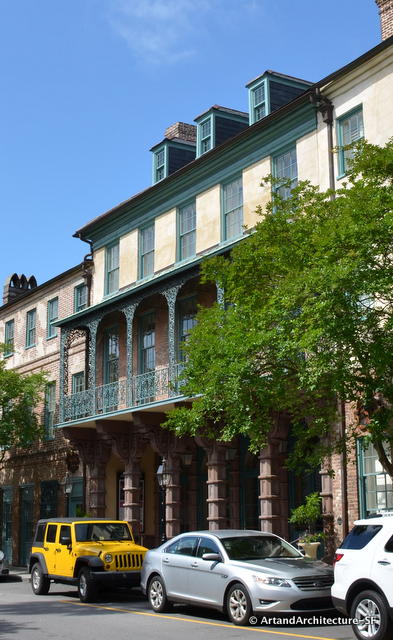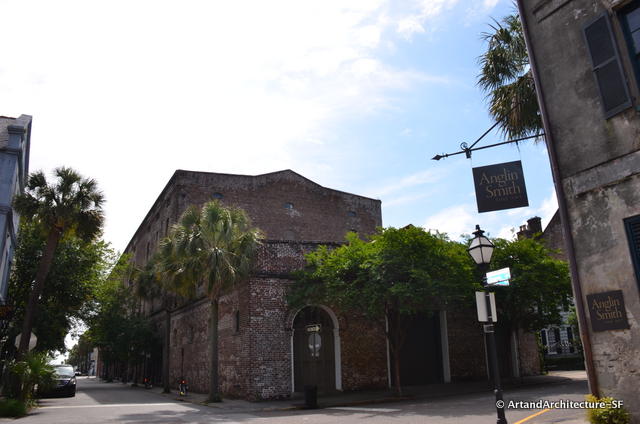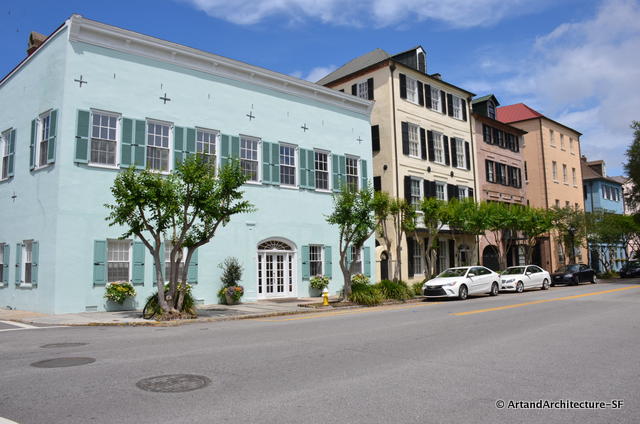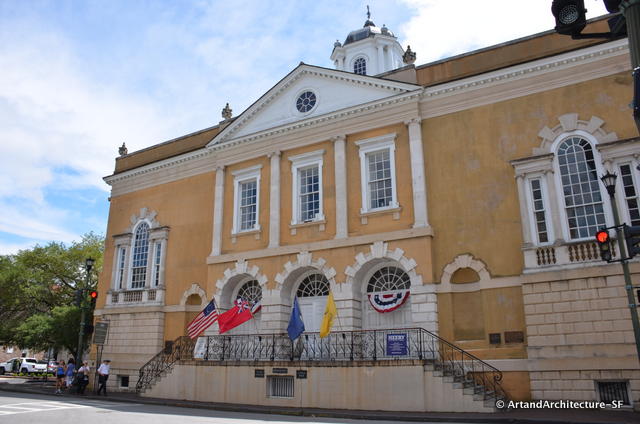Charleston is steeped in Southern history and they are proud of it, beginning with their flag. The South Carolina flag was designed by Colonel William Moultrie in 1775. The first flag simply had a crescent moon with the words liberty written on the moon.
That design flew over a fortress on Sullivan’s Island where Moultrie was part of a stand against the British in June 1776. One of the reasons the South Carolinians were able to hold Sullivan’s Island was because the the fortress was constructed of palmettos, laid over sand walls. These palmettos, spongy as they were, were able to withstand British cannons. The palmetto was added to the flag after that.
Charleston sits between the Ashley and Cooper Rivers, these drain into the Atlantic Ocean. When the British first arrived in South Carolina the distance between the two rivers was 2 1/2 miles, today it is 5 miles.
The British fortified the town with a wall around it. Due to the fact that it was a walled city, the lots, and therefore, the buildings, tended to be narrow.
Since Charleston was founded after the Great Fire of London, and the British had learned a little about fire management, the city was laid out on a grid. The streets, for the same reason were also wide.
Charleston developed Single House Architecture to beat the heat. Single House is an architectural style specifically of Charleston, South Carolina and refers to homes built one room wide with double covered piazzas (or what others in the U.S. call porches), that face East. The homes can be many rooms long and multiple stories high. Some are 10 feet wide, some are 25 feet wide, but they always sit with the narrow part of the house facing the street due to Charleston’s narrow lot sizes.
During the Civil War a coastal defense artillery battery was built on the coastline. It stretches along the lower shores of the Charleston Peninsula. Once this was done, homes were also built along the area.
Charleston was the fourth largest city during the period leading up to the Civil War; cotton was very good to Charleston.
While the earliest settlers primarily came from England, colonial Charleston was also home to a mixture of ethnic and religious groups. People came from Bermuda and the Caribbean, French, Scottish, Irish, and Germans migrated to the developing seacoast town, representing numerous Protestant denominations. Sephardic Jews migrated to the city in such numbers that Charleston eventually was home to, by the beginning of the 19th century and until about 1830, the largest and wealthiest Jewish community in North America.
Charleston was also a very progressive city. Prostitution was legal, and in fact stayed that way until after WWII.
Theaters were prevalent. In the North the theater was considered the highway to hell and was condemned or forbidden. In 1750 the General Court of Massachusetts passed an act prohibiting stage plays and theatrical entertainments of any kind. In 1759, the Colony of Pennsylvania passed a law forbidding the showing and acting of plays under a penalty of £500. In 1761 Rhode Island passed “an act to Prevent Stage Plays and other Theatrical Entertainments within this Colony,” and the following year the New Hampshire House of Representatives refused a troupe of actors admission to Portsmouth on the ground that plays had a “peculiar influence on the minds of young people and greatly endanger their morals by giving them a taste for intriguing, amusement and pleasure”.
Charleston was enjoying a prosperous and entertaining life as the seeds of Civil War were brewing. The Civil War was not kind to Charleston.
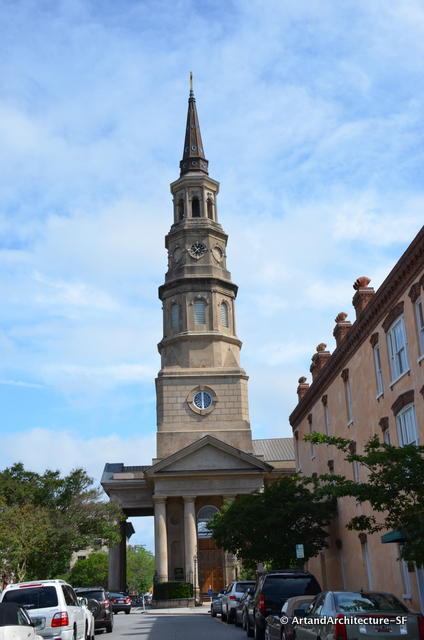
This is the second St. Philip’s Church on this site. It was constructed from 1835 to 1838 by architect Joseph Hyde, while the steeple, designed by E.B. White, was added a decade later.
On December 20, 1860, the South Carolina General Assembly made the state the first to ever secede from the Union. Some of the staunchest Secessionists were members of the St. Philip’s Church.
On December 11, 1861, a massive fire burned 164 acres of the city. In late 1863 the Union forces were able to get close enough to begin a bombardment that lasted on and off for more than a year. The cumulative effects of this bombardment would destroy much of the city that had survived the fire.
The City of Charleston was evacuated from 1863 to 1865 and then sat under Marshall law for the next 16 years.
To add insult to injury a 7.5 earthquake hit Charleston in 1886. It damaged 2,000 buildings in Charleston and caused $6 million worth of damage, the city was so poor by then that the buildings in the entire city were only valued at approximately $24 million.
This was the end of Charleston. The city became, as many cities do, an impoverished empty city. A few people trickled in after WWII and many more with the opening of the Eisenhower Highway system, but today it is only the 225th largest city in U.S.

The House on Cabbage Row in Dubose Heyward’s novel Porgy. At the time of its writing there were 100 people living in the house.
In the 1970s the city began attempting to attract tourism but the city remained rather impoverished until Hurricane Hugo in 1989. At that time over $1billion in insurance money came in to help many people that had spent generations deferring maintenance on their homes. This would include the installation of plumbing and electricity on the insides of the homes, rather than simply run up the exterior walls.
Hugo also, however, killed 45% of all the trees in Charleston, so tree canopy is treasured in Charleston where the trees are still large enough to provide shade. Along with the loss of trees, Spanish moss, so prevalent in the south, disappeared from Charleston.
There was also a 17 foot storm surge with Hugo bringing in “pluff” mud.

Pluff mud is a Carolina Lowcountry term for the slippery, shiny brown-gray, sucky mud, with a distinctive smell like none other, of the tidal flats and spartina grass salt marshes. When you step in it, you could sink up to your ankles, or up to your knees.
Today, Charleston is becoming a prime location for tech, it is considered a very important art center, and has the fourth largest container port in the U.S.
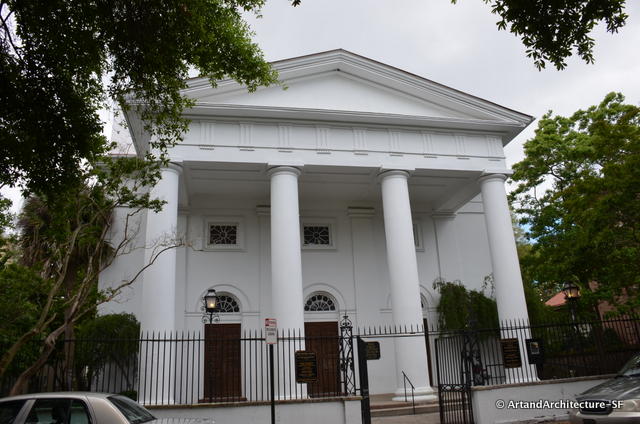
Robert Mills, best know for designing the Washington Monument, designed this church in his home town of Charleston
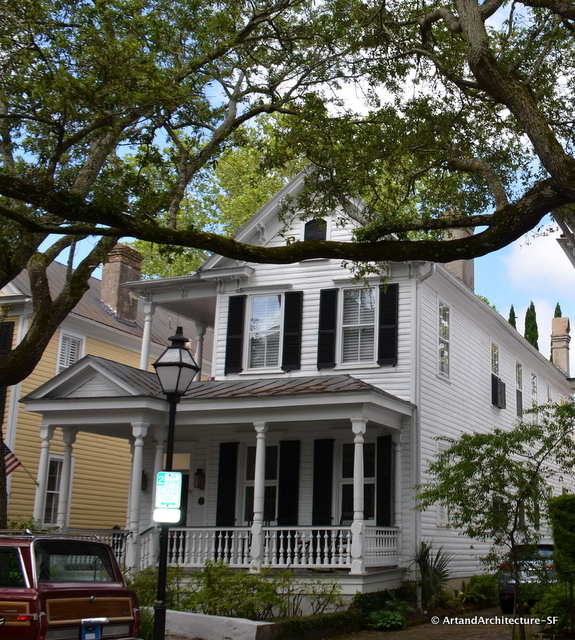
Victorian homes, made of wood, which is rare in Charleston, are scattered in areas that were burned out in the old section of town
If you get to Charleston and want one of the absolute best tour guides I suggest Tommy Dew’s
